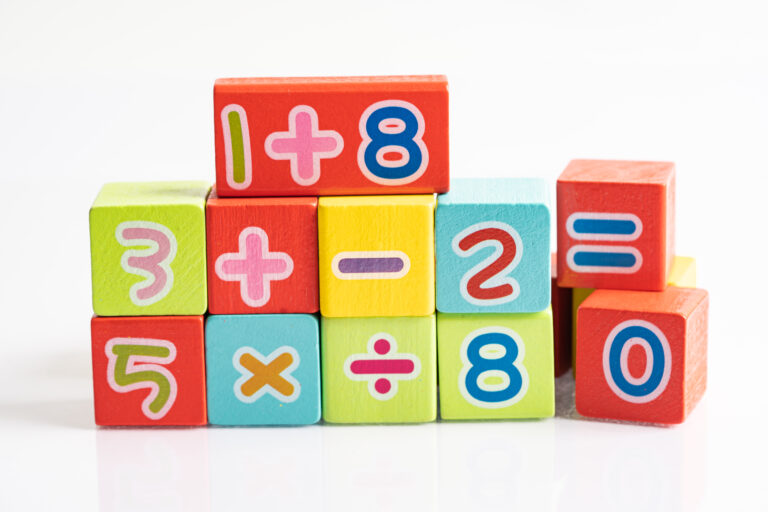In my journey as a childhood educator, I’ve discovered the joy and challenge of introducing young minds to the world of mathematics.
It’s a subject that, when taught creatively, can spark curiosity, enhance problem-solving skills, and lay a strong foundation for future learning.
Here, I want to share some of the fun and engaging math games that have transformed how we approach math in the early years, making it a beloved part of our daily exploration.
Embracing the Fun in Fundamentals
Mathematics, at its core, is about understanding the world through numbers, patterns, and problem-solving.
The key to unlocking this world for young learners is to make it fun and engaging.
Counting with Movement
Incorporating physical activity into math has been a game-changer. We’ve skipped, jumped, and clapped our way through counting exercises.
This approach not only helps with number recognition and sequence but also keeps the children active and engaged. It’s been a delightful way to blend learning with play.
Story-Based Problem Solving
I’ve woven math into storytelling, presenting problems within the context of a story.
Whether it’s helping a character share cookies evenly or figuring out how many animals are in the barn, this method has allowed children to see math as a natural part of everyday life and problem-solving as an adventure.
Sing-Along Math Songs
I’ve incorporated math-themed sing-along songs to introduce concepts like counting, addition, and subtraction.
Music and rhythm make it easier for the kids to remember numbers and sequences. It’s amazing how quickly they pick up mathematical concepts when they’re set to a catchy tune.
Math-Themed Storybooks
I often use math-themed storybooks that weave numerical concepts into compelling narratives.
This strategy has helped children understand abstract math ideas through stories they can relate to. It’s been a fantastic way to combine literacy and numeracy, enriching their learning experience.
Construction Challenges
I’ve introduced construction challenges using blocks or LEGO, where children follow numerical instructions to build structures.
This activity not only supports their understanding of numbers and sequences but also enhances spatial awareness and problem-solving skills. Watching their proud smiles as they complete a challenge is incredibly rewarding.
Creating Interactive Learning Experiences
Interactive games and activities are at the heart of learning in the early years. They encourage exploration, experimentation, and collaboration, key components of effective math education.
Shape Hunts
I’ve initiated shape hunts in our classroom and outdoor play area, turning the identification of shapes into a treasure hunt.
This activity not only reinforces shape recognition but also encourages observational skills and teamwork. It’s been a joy to watch the children’s excitement as they discover shapes in their environment.
Math Manipulatives
Using manipulatives like blocks, beads, and puzzles has been my secret weapon for teaching concepts such as sorting, patterning, and counting.
Hands-on activities provide tangible ways to explore abstract ideas, making math both accessible and enjoyable for young learners.
Math Relay Races
I’ve set up relay races where children solve simple math problems at checkpoints to move forward.
It turns learning into an energetic and competitive game, encouraging teamwork while reinforcing math skills. The excitement and physical activity make the math concepts stick.
Sorting and Classifying Nature Objects
During outdoor time, I encourage kids to collect leaves, rocks, and sticks, then sort and classify them by size, color, or type.
This hands-on activity melds math with science, showing them how math is present in the world around us, fostering a natural curiosity and appreciation for both subjects.
Interactive Math Walls
I’ve created an interactive math wall in our classroom where children can move numbers, shapes, and objects to solve problems or create patterns.
This visual and tactile approach allows children to physically engage with math concepts, making abstract ideas more concrete and understandable.
Integrating Technology Mindfully
While traditional games and activities form the backbone of our math program, I’ve also found value in integrating technology to enhance learning.
Educational Apps
I’ve carefully selected educational apps that offer interactive math challenges suited to the developmental stages of my students.
These digital tools provide immediate feedback and adapt to each child’s pace, offering a personalized learning experience that supports and extends our hands-on activities.
Interactive Whiteboards
I’ve personally seen the benefits of using interactive whiteboards during group lessons.
Displaying puzzles, games, and math stories on a larger scale captures the children’s attention and fosters a collective learning experience.
It’s a tool that encourages participation and makes learning visible to the whole class.
Cultivating a Positive Math Culture
Fostering a positive attitude towards math from an early age is crucial. It’s about creating an environment where mistakes are seen as learning opportunities and persistence is celebrated.
Celebrating “Math Moments”
I’ve made it a point to celebrate “math moments” – those instances when a child grasps a concept, makes a connection, or persists through a challenge.
Acknowledging these achievements builds confidence and underscores the value of effort and exploration in learning.
Encouraging Math Talk
I’ve fostered an environment where talking about math is a part of our daily conversation.
Asking open-ended questions like “What do you notice?” or “How did you figure that out?” prompts reflective thinking and helps children articulate their thought processes.
This dialogue deepens their understanding and makes math a communal, rather than solitary, endeavor.
Math Journals for Reflection
I’ve introduced math journals where children draw or write about their math experiences.
This encourages them to reflect on what they’ve learned and express any challenges they faced. It’s a great way for me to understand their thought processes and celebrate their progress.
Group Problem-Solving Sessions
I regularly organize group problem-solving sessions where the children work together on a math puzzle.
Watching them communicate and collaborate to find a solution reinforces the idea that math can be a social, shared experience, not just an individual task. It builds their confidence and teamwork skills.
Positive Math Affirmations
To combat math anxiety early on, I’ve started using positive math affirmations in our classroom. Phrases like “I can learn math,” “Mistakes help me grow,” are part of our daily routine.
This practice helps build a positive mindset towards math, encouraging resilience and a can-do attitude among my young learners.
Reflections on the Journey
Reflecting on the path to building little mathematicians in the early years, I’m continually inspired by the capacity of young children to engage with mathematical concepts when they’re presented in a fun, accessible way.
The games and activities we’ve explored are just the beginning of a lifelong adventure with math.
Concluding Thoughts
By integrating movement, storytelling, hands-on activities, and technology, we can make math an exciting part of everyday life for our youngest learners.
It’s a journey that’s not just about numbers and equations but about fostering curiosity, problem-solving skills, and a love of learning that will stay with them as they grow.
In my years of working with children, I’ve seen the powerful impact that a positive, engaging approach to math can have, and it’s a reminder of the role we play in shaping not just mathematicians, but confident, curious learners ready to explore the world.












